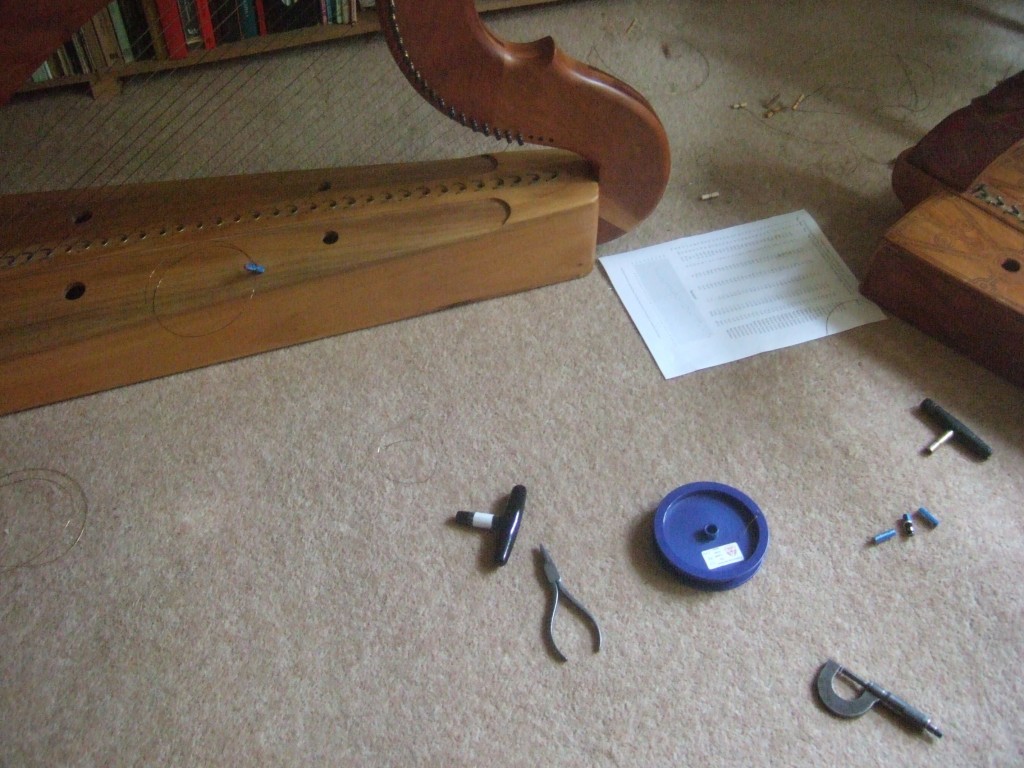I first got hold of one of the HHSI Student Otway harps back in 2007, as part of the very first batch of two, made by David Kortier for the Historical Harp Society of Ireland. I believe there may only have been three made in total – one is in the north of Ireland, one was sold to a private buyer, and I currently have at my house one that was made in 2009.
My original idea was that the Castle Otway harp represented the class of “large low-headed harps”; I imagined it being midway between the 15th century “small low headed harps” such as the Trinity and Queen Mary, and the 18th century “high headed harps” such as the Downhill or Mullaghmast. Based on this idea, I theorised that the large low-headed form may have evolved as a way to add bass strings, or to save money by not needing gold basses, and that a stringing regime with brass trebles and silver basses might be appropriate for a 17th century instrument, and so that is how I have set up the HHSI Student Otway harps.
However since I have been inspecting and photographing the original each August in Trinity College, Dublin, and reading the inscription, I have been thinking more and more that I believe it may have been made in 1700 by Cormac O’Kelly, as a new harp of antique form. Certainly my main interest in it is as the harp owned and played by Patrick Quin in the later 18th century; I am very interested in the instruments that are known or suspected to have been played by named harpers, whose repertory we have written down, such as Denis O’Hampsey, John Robertson and Rose Mooney.
Last month I worked out a scheme for the newly-commissioned HHSI Student Mullaghmast harps, the first of which was strung by Natalie Surina following my scheme, and was used by me and others at Scoil na gCláirseach in Kilkenny. I was pleased that my scheme with iron trebles and brass midrange and bass worked very well (the bass needs tweaking; I have guessed too thick for some notes, and I had specified red brass but the Society string box didn’t have any).
So the combination of being very pleased with my scheme for the Mullaghmast, and thinking about the 18th century use of the Otway (and its possible early 18th century origins), made me resolved to revisit the setup of the HHSI Student Otway harps. I thought that silver basses were quite implausible for the 18th century, and I was interested by how well the iron trebles worked.
I have changed the string angle, stringing from pin 1 to shoe 4, and have raised the pitch of the whole instrument by 2 whole notes. I am skipping the highest 3 pins since I think Quin didn’t use them (there are cracks and plugs in the highest positions). The bass in red brass is not as clear and pungent as on the Downhill, but the red brass basses do take a week or two to wake up. All in all I am very pleased with this change, and I think it gives the harp a very nice 18th century sound. I am looking forward to playing 18th century baroque Irish harp music on it while it is here for the next few weeks, and I am recommending this new scheme for any replica of the Castle Otway harp.

